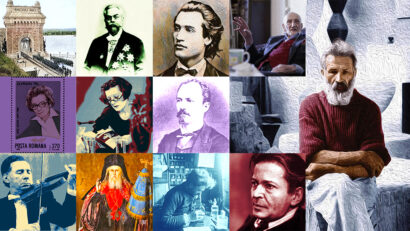Urbanizing Dambovita River
The capital city of Bucharest is crossed, northwest to southeast, over a length of 22 km, by Dambovita River,

Steliu Lambru, 10.09.2022, 13:27
The capital city of Bucharest is crossed, northwest to southeast, over a length of 22 km, by Dambovita River, flanked to the north by its Colentina tributary, and by its south by Arges. The river Dambovita issues from the Fagaras Mountains, has a length of 237 km, and has a drop in altitude of 1,757 m. After it leaves the capital city, it flows into Arges river by the village of Budesti. The river’s name can be confusing, since an entire county in Romania is called Dambovita, with a seat in the city of Targoviste, the old medieval capital of the principality of Wallachia.
The first document mention of the present capital, Bucharest, dates back to the 15th century, the time of Prince Vlad the Impaler. It used to be referred also as the fortress of Dambovita. The inhabitants took full advantage of the sinuous river, using its water for their households. The first public water sources were built during the reign of Alexandru Ipsilanti, in the late 1790s, when the first water distribution networks were built. Back then, the streets of Bucharest were roamed constantly by water vendors, to provide the inhabitants with water before the running water network was put into place. However, the river had its quirks, because the locals had to face periodic flooding and miring in various neighborhoods.
When the modern Romanian state formed in 1859, setting its capital in Bucharest, the river Dambovita had to be tamed and urbanized. Following the example of great European capitals, such as Paris, London, or Berlin, Romanian engineers put together plans to integrate the river into the city, removing natural hazards. The first attempts at taming the river were under Prince Ipsilanti, in 1775,when a canal was built to curb the effect of flooding. In 1813, under Prince Caragea, the riverbed was dredged. However, the real change came after 1878, after Romania gained independence from the Ottoman Empire. Starting in 1880, based on the plans drawn by engineer and architect Grigore Cerchez, the course of the river was stabilized in the city, its bed deepened, and the banks were consolidated, trees were planted lining the banks, and bridges were built.
However, the most ample urban project was run after the great earthquake of March 4, 1977. Back then, President Ceausescu ordered the central area of Bucharest changed, with an overhaul of the Dambovita as part of the project. Historian Cezar-Petre Buiumaci with the Bucharest Municipal Museum, told us about the ambitious project: “In the grand project to overhaul the center of the city, which Ceausescu ordered after the earthquake of March 4, 1977, the Dambovita river played a big part. The grand project of the Civic Center in the capital, whose first sketches appear after the earthquake, was a brutal and unprecedented intervention. It meant razing the central area of the city, thus far a mostly residential area. The loss of these homes meant creating living spaces for the dislocated people. Bucharest became a huge building site, not only in the center, but also in the areas that would be the site for building the huge concrete blocks to shelter the homeless. One such area was the building ensemble in Cringasi-Constructorilor-Giulesti, meant to house 45,000. In parallel, the entire course of the river within the capital Dambovita was overhauled.
Ceausescu used older ideas, which aimed at making the river Dambovita navigable, integrating it into an ample project meant to turn Bucharest into a Danube port by linking the great river to the river Dambovita. Here is the explanation provided by Cezar-Petre Buiumaci: “This overhaul, aimed at creating the Bucharest- Danube canal, was based on much earlier ideas, from the 19th century, which were attempted periodically since then. In order to carry out this project, storage lakes were built at Ciurel and Vacaresti, meant to increase water volumes and create a navigable environment. The geography, however, did not agree with this, and the idea of navigating within the city was dropped in favor of navigating at the edge of the city, in the Vitan-Catelu area.
The new Dambovita had a totally different face. In order to remove for good the threat of flooding, and to make it useful for irrigation, Dambovita was floodgated 20 km from its source, and 80 km before it entered Bucharest. The third flood gate was right in Bucharest, forming behind it the so-called Mill Lake, Lacul Morii. Before entering the city, a branch was dug, coursing south, in order to diver the water surplus towards the Ciorogarla river. The urban course of Dambovita was dug into, and two collection canals for waste water were built. The bridges were rebuilt, and some were relocated. Here is Cezar Buiumaci: “The overhaul of the Dambovita was complex. Not only was the riverbed reconstructed, but also an entire crisscrossing network, with installations to maintain a relatively constant flow. In addition to building new bridges and walkways across the river, certain segments now have promenade places such as pontoons. Part of this set-up is the swimming area in Cringasi lake, close to Ciurel lake.“
If the present aspect of Dambovita River is of recent making, its history goes back at least 200 years. (CC)






























